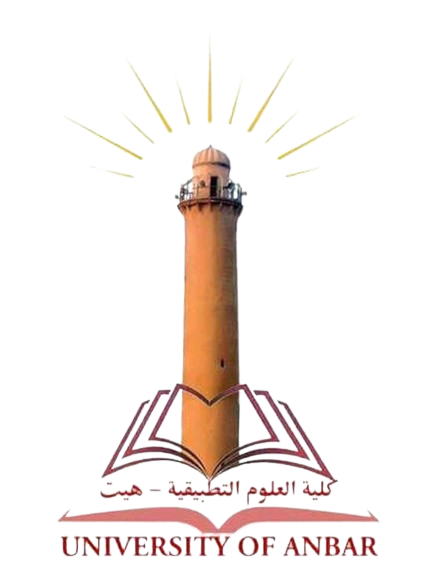Ecological balance in the desert system
Ecological balance in the desert system
Durayd Rasmi Muhammad / Environment Department
The concept of ecological balance refers to the maintenance of the components of the environment in suitable numbers and quantities despite their continuous depletion and regeneration. For example, oxygen is consumed during respiration and is then returned to the atmosphere through photosynthesis. Plants consume the mineral elements in the soil resulting from the decomposition of dead organisms, and these plants are then consumed by certain types of animals to build their bodies. When the animals die, their bodies decompose in the soil, returning mineral salts for the plants to use again, thus maintaining the mineral cycle or balance of salts in the soil. Similarly, fish excrete organic waste, which bacteria convert into inorganic compounds that nourish lichens and algae. The fish then eat these algae, and thus the cycle concludes, maintaining the ecological balance and the clarity of the marine environment.
The environment is a well-defined structure with all the characteristics and standards of systems. As a system, it consists of several components (water, air, land, energy, and living organisms), and each component exists in more than one form. Water, for example, can be solid, liquid, or gas, and oxygen can exist freely in the air or in many compounds such as water, carbon dioxide, and various mineral ores. Energy can be in the form of light or latent heat in various fuels, and a single chemical element is often bound with other elements to form compounds that differ in properties and reactions. All these components interact with each other in a cycle of exchange, such as water being absorbed, energy being absorbed, water being released, energy being released, oxygen being consumed and released, minerals entering the structure of living organisms, and organic materials decomposing to return minerals to the soil. Together, these components form a balanced and continuous system.
· The Desert Ecosystem
In the past, deserts have inspired poets with beautiful imagery, celebrating the night, the blue sky, the echoes, the mirage, and herds of camels, even though they were suffering from the harsh conditions that surround life. Deserts do not stop at their boundaries on Earth; they gradually invade agricultural lands, a phenomenon known today as "desertification," one of the most prominent current environmental issues.
Deserts are arid regions with insufficient water and vegetation, and their characteristics vary. Temperatures can vary greatly from one desert to another; for instance, in the African desert region, temperatures can reach the highest on Earth (58°C), while in the Russian steppe deserts, temperatures can approach freezing for several months. There are three types of deserts based on temperature: hot deserts, temperate deserts, and cold or frozen deserts.
In terms of their external appearance, deserts also vary. Some are sandy or have moving sands like the Arabian Desert, while others have some green areas, like parts of the Great Basin Desert in the United States, or are bordered by forests or seas, with some areas featuring rocky terrain. Desert definitions vary among climatologists, botanists, and soil scientists, but the comprehensive scientific definition of a desert is "areas where water resources are much lower than the evaporative capacity, coupled with extreme temperature fluctuations between day and night, and summer and winter."
Desert soils are characterized by low organic matter, which affects the vegetation, resulting in sparse plant life with very few trees. There are vast areas of deserts that are completely devoid of plants.
Many desert plants are annuals, like mallow and purslane, which start to germinate after rainfall and quickly complete their life cycle from germination to seed formation, passing through flowering and fruiting. These plants are often referred to as "escape plants" because they finish their life cycle quickly when water is available. They usually have large, brightly colored flowers that attract insects, which carry pollen from one flower to another while feeding on the nectar. The eggs of these insects often hatch when the rains fall, as their life depends on water and plants.
· Perennial Desert Plants
Perennial desert plants have adapted to the harsh conditions of the desert. There are succulent plants that are highly efficient in absorbing and storing as much surface water as possible, keeping it in their cells to prevent loss. Other plants are drought-resistant and exhibit various adaptations to obtain and conserve water. These plants grow sparsely to avoid competition for water and have roots that spread deeply into the soil in search of moisture. Their thick, spiny leaves help retain the water they have. An example is the Saguaro cactus, a giant plant found in the desert, sometimes growing up to 15 meters tall, with thorns that can be up to 2 inches long.
· Desert Animals
Desert animals are usually small in size to reduce exposure to the harsh desert environment. Many desert animals are burrowers that live in holes to protect themselves from direct sunlight and forage at night when temperatures are lower. Consequently, mammals and birds are rare in deserts because it is difficult for them to maintain normal body temperature under the extreme heat and water scarcity. In general, desert animals are fewer in number compared to animals in other, less harsh environments. This is due to the limited water and the sparse distribution of vegetation, which limits the food available to herbivores, and consequently the predators that feed on them.
The animals most commonly found in deserts include insects, spiders, scorpions, reptiles, lizards, and small mammals like jerboas and the fennec fox (desert fox). The camel, on the other hand, does not exist in the wild but is well-suited to desert life and movement across desert terrain.
The desert is a land-based ecosystem, where all the components that make it a complete system are present. Water and temperature are the main limiting factors for life in this environment. Plants are producers, insects, some reptiles, and rodents are primary consumers, and carnivores like the fennec fox, some snakes, and scorpions are secondary consumers. If we consider the desert ecosystem from the perspective of a food pyramid, plants form the base, followed by lizards, jerboas, and small rodents in the middle, while the top is occupied by the fennec fox.
· Disruption of Ecological Balance
What happens if rainfall is significantly reduced in a given year? What if humans intervene by hunting large numbers of fennec foxes? When rainfall decreases, only a minimal amount of annual plants grow, which in turn sustains a limited number of herbivores. This provides food for a small number of carnivores. Any change in one component of the ecosystem leads to changes in the other components, but ecological balance remains.
However, if large numbers of fennec foxes are hunted, herbivores may thrive due to the reduced predation, leading to an overpopulation of herbivores, which puts pressure on the desert plants. As a result, the plants become unable to sustain the large herbivore population, leading to a food shortage. Some herbivores may survive the famine, while others will die. As herbivore numbers decrease, the remaining foxes have sufficient prey, and the ecosystem adjusts to a new balance. Thus, any change in the components of the ecosystem leads to a dynamic shift in ecological balance, not a fixed one.




